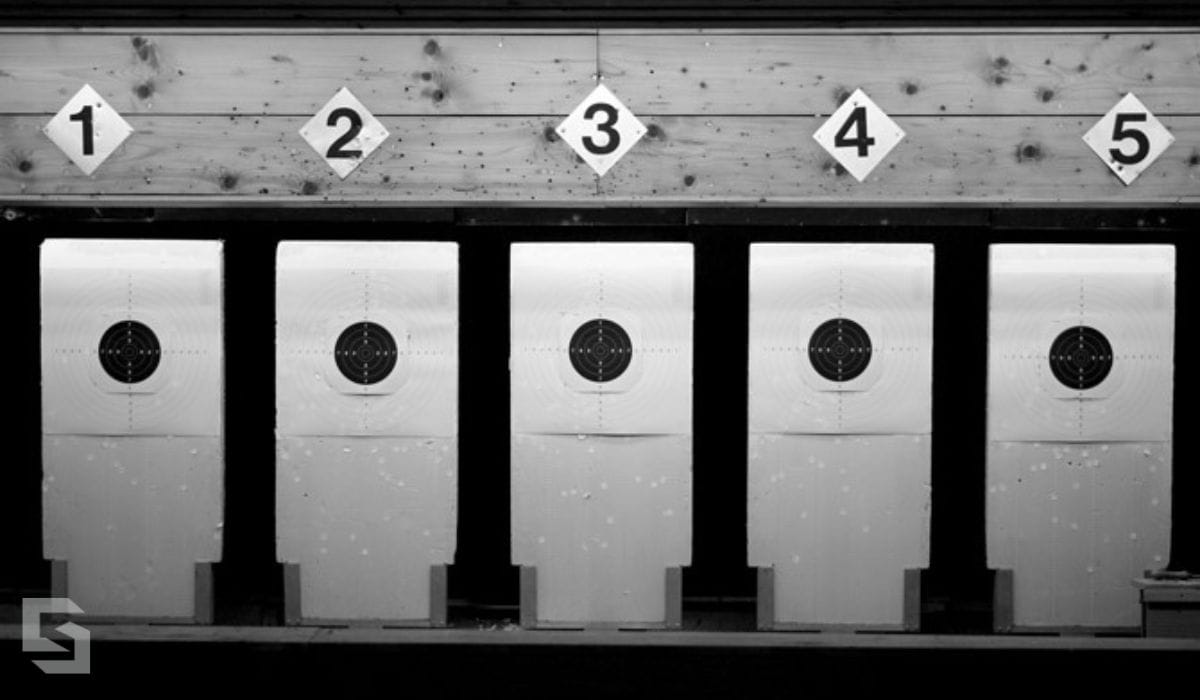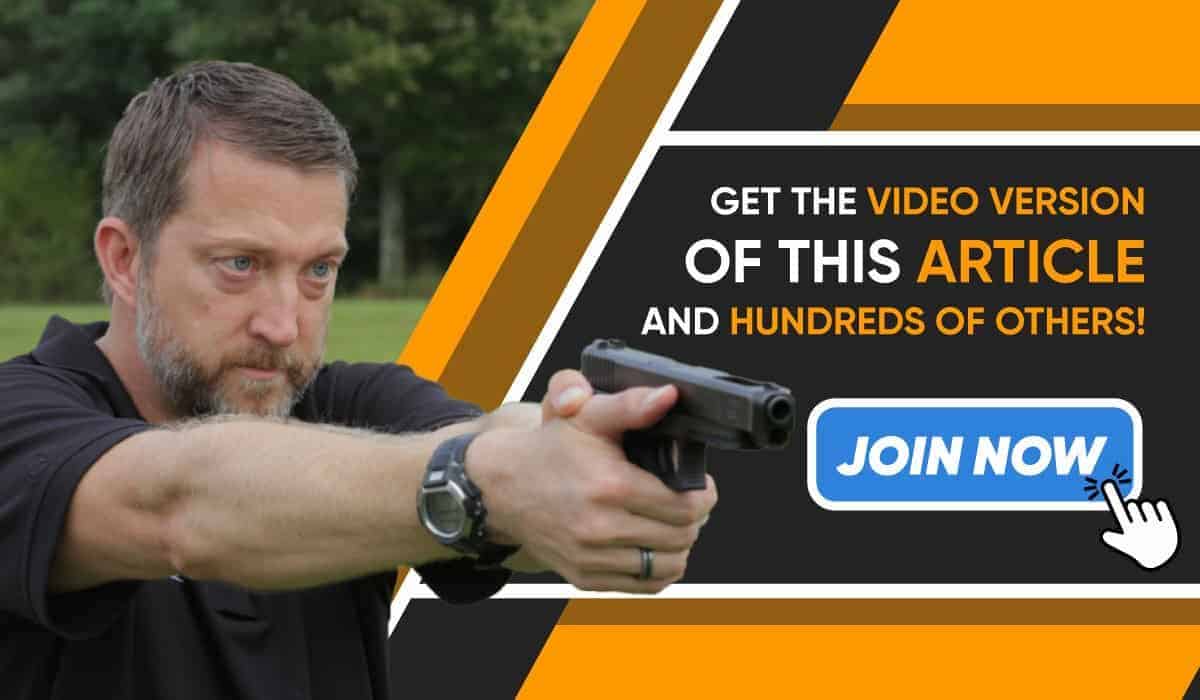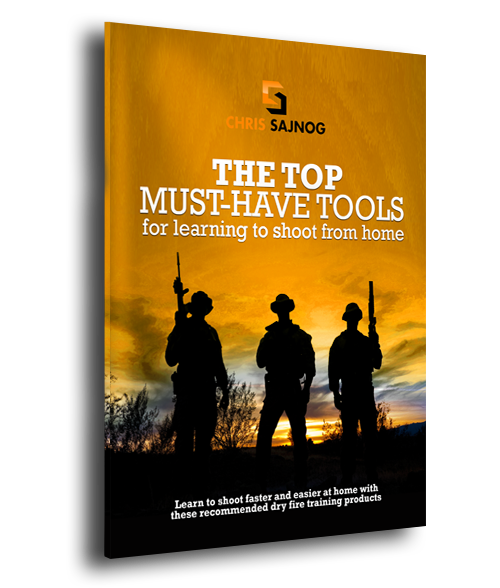Firearm Fundamentals for Continuous Shooting Improvement
Hello everyone! In this post, I’ll discuss firearm fundamentals and how they can be applied to enhance your shooting skills over time. Let’s go ahead and get started.
When I’m at the range, I don’t just focus on my own firing point or lane (unless I’m actively shooting of course). I’m the type of person who likes to take in my surroundings and even watch other people shoot. There’s something to be said about observing another person shoot. You recognize the good and bad things a lot easier. Especially with shooting, it can be difficult for novice shooters to properly critique themselves.
One of the most important aspects of shooting, especially on your own, is the value of self-criticism and holding yourself accountable for not following the fundamentals of shooting. If you’ve forgotten those fundamental habits, refresh yourself by reading Chris’ “7 Habits of Highly Effective Shooting.” Chris also goes in-depth on each of the fundamentals or habits in seven follow-on articles.
I keep two copies of the main article in my range bag (my new 5.11 range bag, which I’ll critique in the coming weeks). One copy is for me, which I review every time I shoot as part of my own internal safety brief and mental preparation. The second copy is for anyone who asks me for “tips” at the range. I explain the habits of highly effective shooting, let them practice the skills, and then give them the extra copy.
I’m not plugging Center Mass Group, but it’s simply about sharing something I believe helps another person improve his or her own shooting skill sets. Something must be said when you align all seven habits and punch a hole center mass! No matter how many times I hit center mass or whatever my target area is, I never get tired of it. Shooting and training are my passions.

Hitting the Range
Like I said I’ve been spending a copious amount of time at the range conducting both slow and rapid fire drills. I’ve been using the DHS Transtar (TS) full-size and half-size blue and green silhouettes, along with twenty-five-yard pistol bulls-eyes. I’ve always considered myself an excellent shooter, but I want to be an accomplished and exceptional shooter. I’m always looking for the edge in my training.
I actually told Chris this past week that the best thing to happen to my shooting skill set was his arrival to my unit as the lead advanced marksmanship and close-quarters combat instructor. Chris DOES NOT hold back when you aren’t following his shooting task direction and instruction. He’ll straight up ask you “Why didn’t you listen to me” when you’re not hitting your target. He instilled a new sense of firearm fundamentals training in me.
Chris always says you should hold yourself accountable for every round, regardless of whether you’re at the range or on an operation. Holding yourself accountable not only means being responsible for where that round impacts (your target and beyond) but it also means holding yourself accountable for your training habits when punching holes in paper or making steel rings.

A few weeks ago, though I was hitting center mass in very tight groups at twenty-five yards with my duty pistol (Sig Sauer P229R-DAK chambered in .40S&W), I was noticing my rounds were being just slightly pushed to the right of dead center. It seemed no matter what I did with my grip, sight picture, trigger manipulation, stance, etc., I kept tight groups just slightly off-center. Though I was still “keyholing” at twenty-five yards, I wanted to do better.
I sat down again and went over the seven habits of highly effective shooting. After reading, I was able to determine that my thumb(s) were the cause. I was doing what’s known as “thumbing” the grip. As I was manipulating the trigger to the rear, I was inadvertently applying very slight pressure with my thumb(s) on the left side of the pistol. Hardly enough to even change my sight picture.
So I decided to relax my thumbs off the weapon just enough to where they were touching the base of my right thumb in the back strap or tang of the grip. It felt odd but I couldn’t deny the results. A small group hitting dead center…keyholing my keyholes. It didn’t matter if it was slow or rapid fire. For me, rapid fire is about one round every two seconds at twenty-five yards. It’s ample time to acquire a proper sight picture and manipulate the trigger to the rear.
Sure you could shoot faster but I live by the motto that “loud noises DON’T end gun fights.” Meaning you can spray and pray and not hit a damn thing, and I’ll bust out one well-placed round per threat and call it a day.
We can all learn something new no matter how good we think we are or how long we’ve been shooting
Use It or Lose It!
Needless to say, I was ecstatic about my new shooting grip and results. I’ve been shooting consistently now for just under fifteen years, but I was willing to deconstruct my habits one by one, and then once the problem was identified, I was able to reconstruct my grip. I know that I’ve effectively increased my shooting skill sets, both combat and marksmanship.
If you take anything away from this article it’s we can all learn something new no matter how good we think we are or how long we’ve been shooting. If you go to the range and just keep doing the same thing over and over again, well I guess that’s just good enough for you. But “good enough” oftentimes isn’t enough to get the job done. You should always find ways at the range to make yourself a highly effective shooter.
My next step is to look for the next improvement that’s going to take me up to the next level. It’s a never-ending process and shooting is a perishable skill set. Never forget that the bad guys are out there training too. Make the best of your training because in a moment your life can change, and I guarantee you will revert back to your training…so make it count and remember, “loud noises DON’T end gun fights!” Have you ramped up your range game lately?
Alright, so that is it for today. I trust you found value in this exploration of Firearm Fundamentals, leading to improved accuracy and boosted confidence when using firearms. Please share and comment on this post if you haven’t already, and keep paving your path to perfection!



